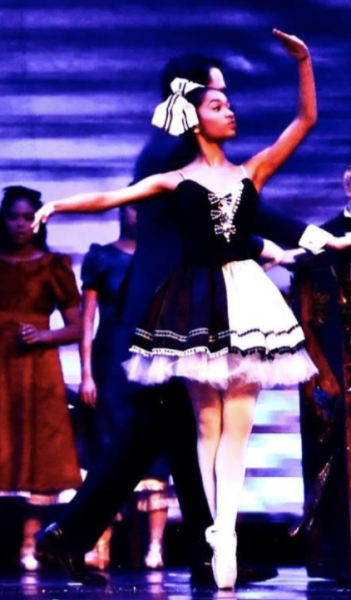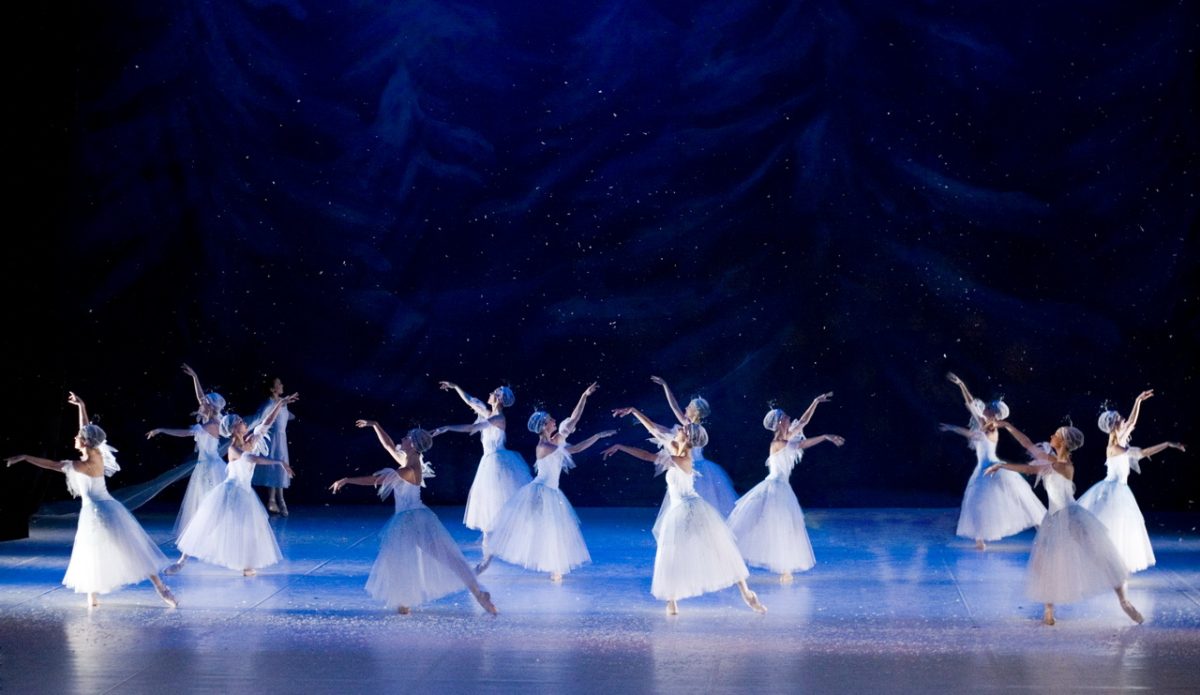The month of December is an exciting time in my house. My family and I love to decorate the house, put up the Christmas tree, and plan for gatherings with friends and family. December has also become synonymous with excitement for the Nutcracker ballet, which my family loves to watch and I love to perform in. Though I have been dancing since the age of 3 and have performed in many shows, dancing with my friends in the annual production of my dance studio, Nunnbetter Dance Theatre’s, Nutcracker Ballet Show remains my favorite. The dancers audition in the fall, and if admitted, then begin endless rehearsals that lead up to the final shows in December. This year, I will finally be dancing in my dream role of Clara, the character around whom this magical ballet revolves, along with my friend who will also play Clara in another cast.
The origin of the Nutcracker, a classic Christmas Story, is a fairytale ballet, with two acts centered around a family’s Christmas Eve celebration. Marius Petipa originally choreographed Alexandre Dumas Père’s rendition of the E.T.A. Hoffmann novel, which Tchaikovsky adapted to music. Ivan Vsevolozhsky, the director of the Imperial Theatres in Moscow, commissioned it in 1891, and, a week before the Christmas of 1892, it made its premiere.
“The Christmas ballet was first performed outside of Russia, in England, in 1934. Its first United States performance was in 1944 by the San Francisco Ballet,” according to The Nutcracke’s official site. The New York City Ballet first performed George Balanchine’s Nutcracker in 1954, and the holiday ballet didn’t reach its current popularity until after Balanchine’s staging became a hit in New York City. “The now well-known Christmas ballet has been reimagined in many television, film, and literary adaptations.”
The choreography and musical rendition of the Nutcracker are not the only things that make this ballet such a cherished one. The story that the cast acts out ties the elements together to create a beautiful performance.
Act 1:
It is Christmas Eve, and Dr Stahlbaum and his wife are having a party. They have two children: Clara, and her younger brother, Fritz. Mrs Stahlbaum has invited some of Clara’s friends from the ballet school, who dance for the guests, after which they ask her to dance. She has also invited a magician, Drosselmeyer, to provide entertainment. In my studio’s version, he also brings his handsome nephew. He brings gifts for the young children and gives a Nutcracker doll to Clara; she is fascinated by it, and her belief that it has magical powers is confirmed when her brother breaks it and the doll is magically mended by Drosselmeyer.
The party then comes to an end, the guests depart, and the family goes to bed. However, unable to sleep, Clara creeps downstairs looking for the Nutcracker. As the clock strikes midnight, strange things begin to happen. The whole room seems to grow and grow, and a horde of giant rats, led by their King and Queen, attack Clara. The Nutcracker springs to life and, summoning the toy soldiers, defends her. A fierce battle ensues. Realizing that the Nutcracker is about to be overpowered, Clara hits the Rat King with her shoe, and he collapses. The Nutcracker falls exhausted to the ground, seemingly lifeless. Sadly, Clara takes him in her arms and tries to revive him. He gradually comes back to life and, to her amazement, has turned into a handsome Prince. He dances with her and leads her to the Land of Snow.

Act 2:
The dream continues as Clara arrives at the land of sweets with her handsome prince, just in time for the very special holiday celebration. The Sugar Plum fairy, accompanied by her lovely little angels, prepares a special show for their pleasure. Clara and her prince are seated on a high throne from which they watch dancers from around the world do their native frolics in glorious traditional cost
umes. First come the spicy Spanish ladies, followed by many children and a silly dragon from China. Afterward, a genie from Arabia comes with a lovely lady with flowing veils. Together, they glide to exotic music. Then, folksy Russian peasants and Mother Ginger with her comical clowns appear. The excitement continues with a dazzling display of waltzing flowers and tiny buzzing bumblebees to delight the couple. The fantasy ends in a grand finale, where the sugar plum fairy and her cavalier dance a duet of sheer enchantment.
There are many productions of the Nutcracker performed all over the world during the Christmas season. Both the New York City Ballet in Lincoln Center and the
American Ballet Theatre in California put on professional productions of the ballet, but these tickets can be hard to come by, with steep prices and high demand. However, everyone can still enjoy seeing the ballet, because many smaller dance studios also put on productions of the beloved show. This year, my studio will be having 4 shows on December 15, 16, and 17 at Bergen Academy. So, this holiday season, come out and watch a magical production of The Nutcracker and get ready to be ready to be mesmerized by the beautiful sets, classical dancing, and ornate costumes, all set to Peter Ilyich Tchaikovsky’s masterpiece score.












































































































































